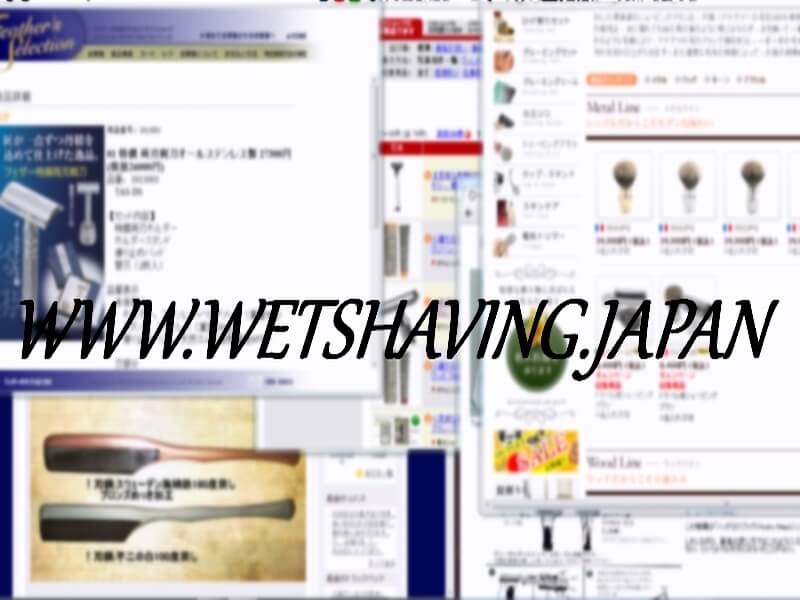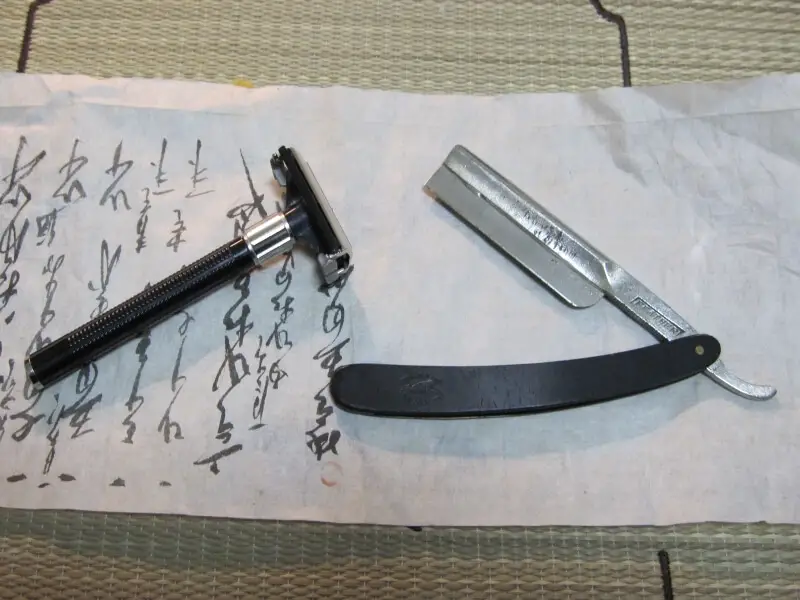
For wetshavers in Japan, the information side of things is a little sparse when compared to English language resources. There aren’t any real forums, apart from an ancient thread on 2chan, and blogs aren’t as common as they are in the West. There are a few sites, though, that are really of value, and I’d like to introduce them here (Please note–All of these sites will be in Japanese, unless specifically noted. You can use the Google Translate links provided to try to read them, but remember that it won’t really be the same.)
For the Student
The basics of wetshaving are, of course, more than adequately covered by Mantic59’s videos (and this site). But if you’ve got some ability to read Japanese, and want to see what Japanese authors have to say about wetshaving, here’s where to look.
1. Kamisori Club (Google Translate)
Though primarily a commercial site, Kamisori club’s mission is not only providing wetshaving goods like brushes and soap, but also educating consumers on their proper use. They have articles on making lather, brush maintenance, and general wetshaving techniques, and all of them are unsurprisingly similar to what we know already–they focus on skin prep, beard reduction and adequate skin care. If you can read Japanese, their FAQ is a really valuable tool, and well worth reading. Of course, if you have the money, they also sell some beautiful handmade Italian shaving sets, but man…those Italian hands sure cost a lot.
2. Nagoya Slurry Club (Nagoya Todorokaiー名古屋砥泥会) (Google Translate)
This blog is kept up by an acquaintance of mine who goes by Yuukensan. He is an ardent wetshaver, though his interests run more toward Japanese razors (kamisori). He does have a couple of Gillette safety razors, as well, and loves loading them with Feather blades. His shaving posts deal with sharpening and using Japanese razors, his Tanuki fur brush, and more.
The link above leads directly to his shaving posts, but I highly recommend browsing the blog in general. Yuukensan loves his country, and dedicates his blog to exploring many aspects of Japanese culture–especially the ones involving alcohol. 😉

For the Historian
If you are like me, one of the big reasons you are interested in wetshaving is the history and tradition involved. I find myself spending as much time researching the history of shaving as I do on my razors and hones. These sites can help you get a Japanese perspective.
3. Special Mention-Kamisori Club I’m only putting this site again because of one page: the English synopsis of the book “The History and Culture of Shaving in Japan.” I have the book, but I’ve read this page far more.
For the Shopper
The web being international as it is, there’s really no reason to limit oneself to Japanese websites for shopping. However, it’s still interesting to note what is available in-country.
4. Feather Safety Razor Company. (Google Translation)
While you can get Feather DE blades at most drugstores and even grocery stores here in Japan, the Feather Shop (GT) website is almost the only place to get Feather SE blades (in bulk only). They offer the Feather Popular DE holder, as well as a variety of other fine grooming tools like the Feather RG disposable straight and more. It’s also a nice place to see what other things Feather is up to. And if you’re in Japan, there’s a map to the Feather Museum (GT)!
5. Rakuten (Rakuten offers their own English site).
Rakuten is a general purpose shopping portal, like eBay without the auction focus. People can set up a simple shop and sell all kinds of things; for most Japanese customers, this would be the main source for any kind of wetshaving gear. What makes it of interest to me, though, is that there is now a Mühle shop on Rakuten selling the fine German products for truly reasonable prices. Until very recently, European products in Japan were incredibly expensive–at least twice the price you would pay in the USA. But now, with the high Yen and a few decent entrepreneurs, you can get fine wetshaving products on sites like this without breaking the bank.
So those are the Japanese sites most useful for wetshavers. The language barrier is very real, but I think it’s interesting to see how similar the basic ideas are even in a country without the current surge in wetshaving that is occurring in Europe and North America.
